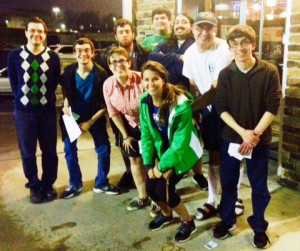Building Financial Literacy and Building Acceptance
In April, we mark both Autism Acceptance Month and National Financial Literacy Month. Since we celebrate them together, let’s focus on how increasing financial literacy promotes acceptance and inclusion of people with autism and other intellectual and developmental disabilities (IDD).
Economic self-sufficiency is one of the goals of the Americans with Disabilities Act (ADA), along with equality of opportunity, full participation, and independent living. As we approach the 25th anniversary of the ADA in July, we still have a long way to go to achieve the goal of economic self-sufficiency. Nearly one in three people with disabilities age 18 to 64 lives in poverty, more than twice the rate of working age people with no disability (DeNavas-Walt & Proctor, 2014). Correcting that financial disparity will require a lot of hard work on many fronts.
One step that we can take in our communities is to make training available to increase financial literacy of people with disabilities and their family members. As a part of its Real Economic Impact Network, the National Disability Institute has created the Financial Education Toolkit, which includes an array of tools and resources to promote financial literacy education. These tools teach core concepts in areas such as understanding what money is, budgeting and spending responsibly, and establishing and working towards financial goals.
As we improve financial literacy, we also need to work with people with IDD and their family members to put those concepts to work in a way that improves their individual financial situations. The Center for Future Planning provides critical information that people with IDD and their families can use to stabilize their financial situations now and to plan for the future. The Center provides families with resources on what public benefits are available and how to organize private funds in Special Needs Trusts and ABLE Accounts without putting public benefits at risk. ABLE accounts are not yet available, but we expect they will be soon in many states.
To participate in all aspects of community life, people with IDD need financial resources. Even as April comes to an end, it’s important to continue developing ways to help people with IDD and their families develop financial skills and build financial resources. Moving towards economic self-sufficiency is moving towards acceptance.










